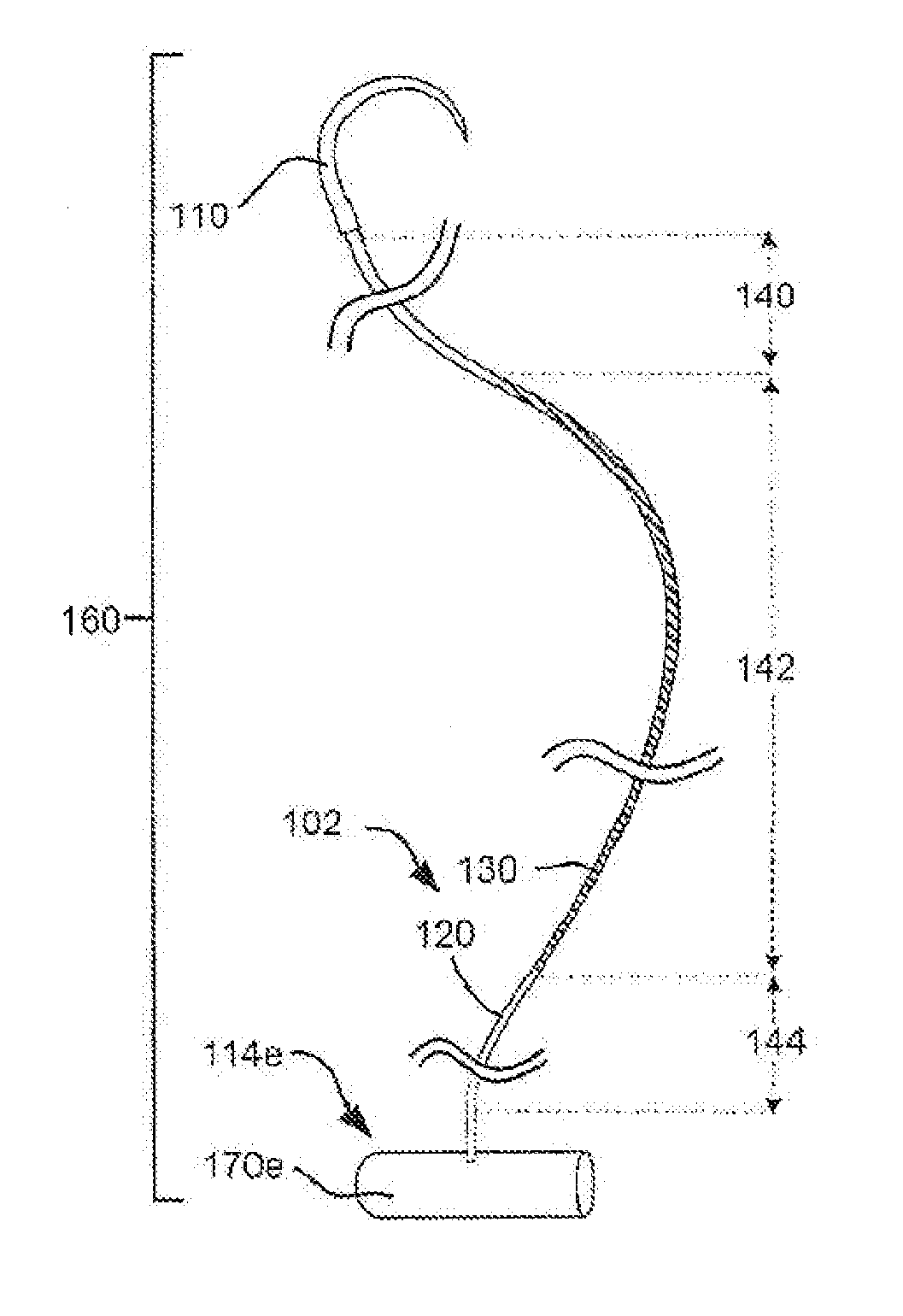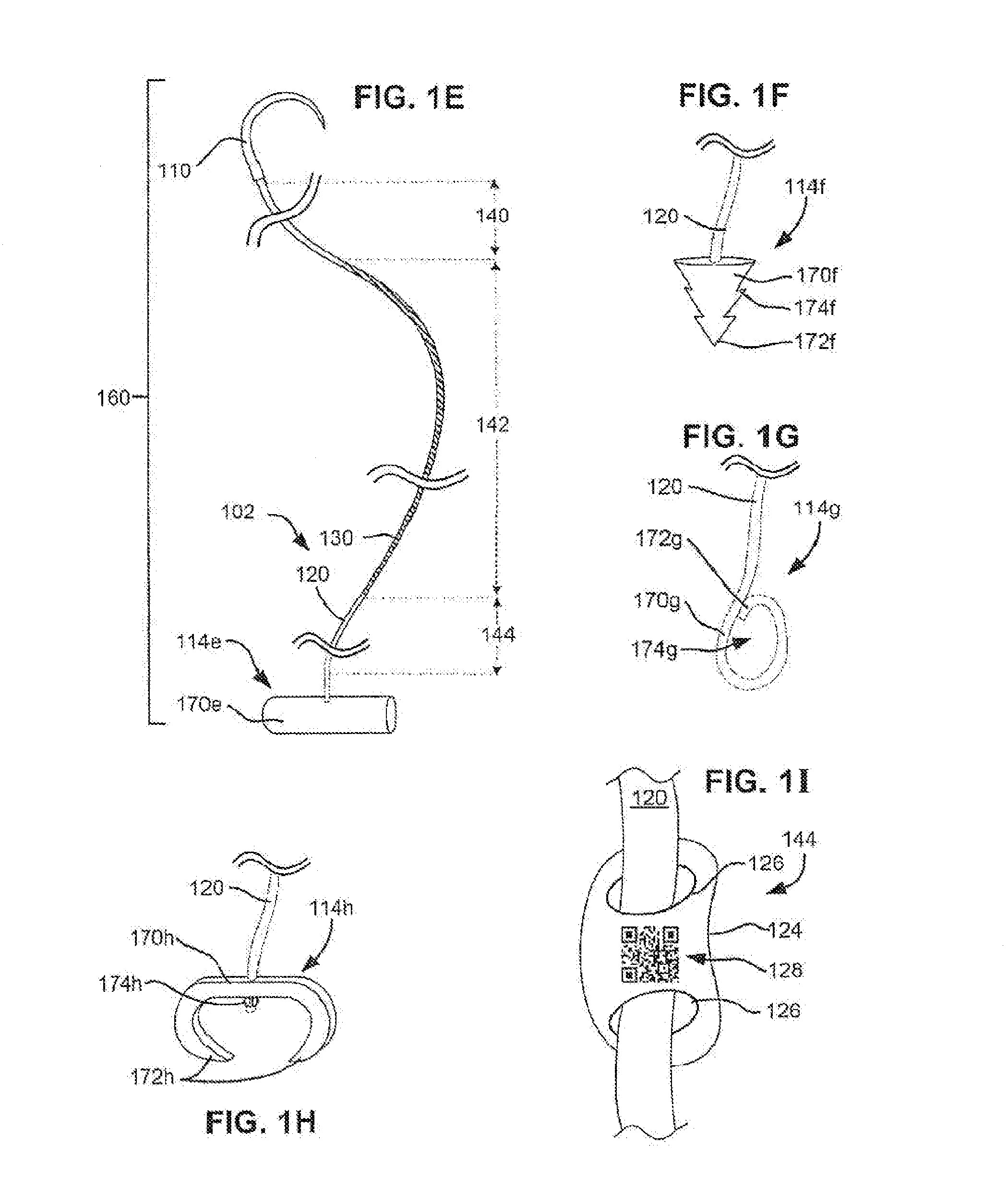Surface texture configuration for self-retaining sutures and methods for forming same
a self-retaining suture and surface texture technology, applied in the field of self-retaining suture surface texture configuration and methods for forming same, can solve the problems of difficult creation and/or deployment of self-retaining suture retainer features, which may impair and achieve the effect of adversely affecting the tensile strength of the suture and readily formed
- Summary
- Abstract
- Description
- Claims
- Application Information
AI Technical Summary
Benefits of technology
Problems solved by technology
Method used
Image
Examples
Embodiment Construction
Definitions
[0042]Definitions of certain terms that may be used hereinafter include the following.
[0043]“Self-retaining system” refers to a self-retaining suture together with devices for deploying the suture into tissue. Such deployment devices include, without limitation, suture needles and other deployment devices as well as sufficiently rigid and sharp ends on the suture itself to penetrate tissue.
[0044]“Self-retaining suture” refers to a suture that includes features on the suture filament for engaging tissue without the need for a knot or suture anchor. As used herein the features include, for example, textural features.
[0045]“Tissue retainer” (or simply “retainer”) or “barb” refers to a physical feature of a suture filament which is adapted to mechanically engage tissue and resist movement of the suture in at least one axial directions. By way of example only, tissue retainer or retainers can include one or more of, hooks, projections, barbs, darts, extensions, bulges, anchors...
PUM
 Login to View More
Login to View More Abstract
Description
Claims
Application Information
 Login to View More
Login to View More - R&D
- Intellectual Property
- Life Sciences
- Materials
- Tech Scout
- Unparalleled Data Quality
- Higher Quality Content
- 60% Fewer Hallucinations
Browse by: Latest US Patents, China's latest patents, Technical Efficacy Thesaurus, Application Domain, Technology Topic, Popular Technical Reports.
© 2025 PatSnap. All rights reserved.Legal|Privacy policy|Modern Slavery Act Transparency Statement|Sitemap|About US| Contact US: help@patsnap.com



